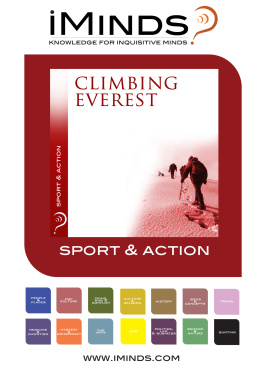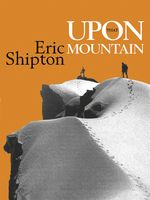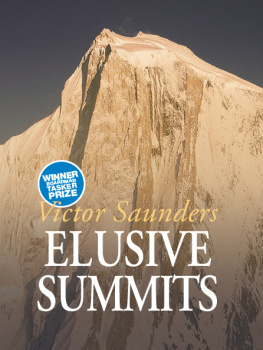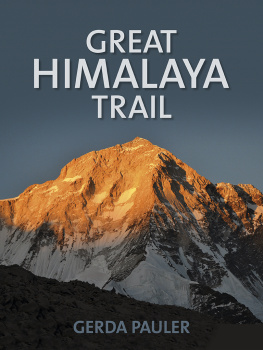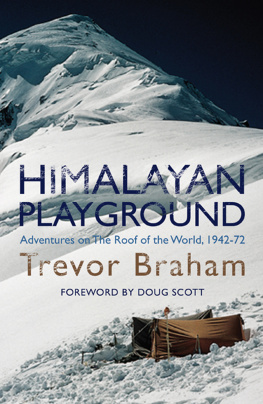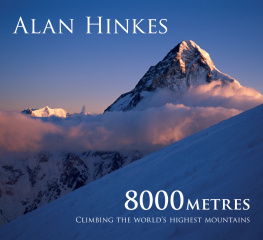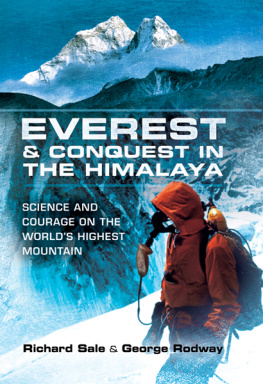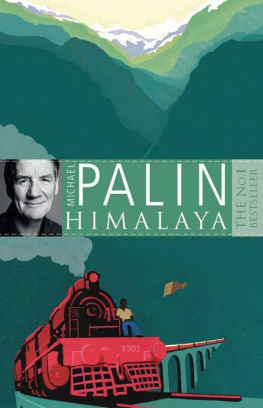COLLIDING CONTINENTS
Geological timescale, after the International Commission on Stratigraphy, showing some of the major orogenic mountain-building events and key tectonic events in the Alpine-Himalayan mountain belt. Note the non-linear scale. Age is in million years (Ma).
colliding
CONTINENTS
A geological exploration of the Himalaya, Karakoram, & Tibet
MIKE SEARLE


Great Clarendon Street, Oxford OX2 6DP
Oxford University Press is a department of the University of Oxford.
It furthers the Universitys objective of excellence in research, scholarship,
and education by publishing worldwide. Oxford is a registered trade mark of
Oxford University Press in the UK and in certain other countries
Mike Searle 2013
The moral rights of the author have been asserted
First Edition published in 2013
Impression: 1
All rights reserved. No part of this publication may be reproduced,
stored in a retrieval system, or transmitted, in any form or by any means,
without the prior permission in writing of Oxford University Press,
or as expressly permitted by law, or under terms agreed with the appropriate
reprographics rights organization. Enquiries concerning reproduction
outside the scope of the above should be sent to the Rights Department,
Oxford University Press, at the address above
You must not circulate this book in any other binding or cover
and you must impose the same condition on any acquirer
British Library Cataloguing in Publication Data
Data available
Library of Congress Cataloging in Publication Data
Data available
ISBN 9780199653003
Typeset by Sparkswww.sparkspublishing.com
Printed in China by C&C Offset Printing Co. Ltd
Links to third party websites are provided by Oxford in good faith and
for information only. Oxford disclaims any responsibility for the materials
contained in any third party website referenced in this work.
DEDICATION
This book is dedicated to the memory of my parents, Geoff and Pauline Searle, with
my love, my gratitude, and my thanks for a wonderful peripatetic upbringing.
I was lucky enough to have been born and brought up in some of the most wild and beautiful lands of the Far East, in Malaya, Java, and Borneo. As a geology undergraduate at Aberystwyth University in Wales I had been on a three-month-long climbing expedition to Patagonia with four friends, an expedition that evolved into an eight-month trip along the Andes from Patagonia along the length of Chile, through Bolivia and Peru to Ecuador. I had climbed some of the dreaming rock spires of Patagonia, had seen the great North Patagonian Ice Cap with its immense glaciers flowing straight into the Pacific Ocean, the steaming volcanoes and the magnificent ancient Araucania forests of the Chilean Lake District, and the wild, empty stretches of the Atacama Desert. I had travelled across the high Altiplano of Bolivia, trekked across the Peruvian Andes, and had climbed Cotopaxi, one of the great equatorial volcanoes of Ecuador. I had three weeks left in South America, and decided that I had to see the Galapagos Islands before I left. Galapagos was where Charles Darwin had made his studies of the famous finches and began to formulate his ideas on the origin of species, natural selection, and the survival of the fittest. These ideas culminated in the theory of evolution, the greatest scientific breakthrough of the time. Darwin had read Charles Lyells Principles of Geology on the voyage of the Beagle along South America, and this classic work sowed the seeds of his theory of evolution and the book that changed the scientific world, The Origin of Species. As Darwins great champion Thomas Huxley said, Biology takes its time from geology.
I was reading Darwins Origin of Species at the time, in between watching the famous Galapagos finches, the fabulous frigate birds, boobies, and sea eagles, diving with sea lions and marine iguanas, and tramping over the beautifully preserved lava flows. Here, cruising through the Galapagos Islands, Charles Darwin had come up with probably the most important scientific theory since Albert Einsteins theory of relativity. Einstein had linked gravity, space, and time into one all-encompassing theory of general relativity; Charles Darwin related biology and time into the theory of evolution. The fourth dimension, time, is the cornerstone of the science of geology. Time, it seemed to me, was the key to understanding almost everything in the natural world, how the Earth formed in the past, how it evolved, and how it works today.
My first three trips to the Himalaya were on mountaineering expeditions. From vantage points high on the peaks of the Kulu Himalaya and Langtang Lirung in Nepal I looked across vast oceans of mountains rippling away to the far distant horizons in the Karakoram and Tibet. No one can fail to be inspired by the views of these peaks. Soon my passion for climbing was equalled by my passion for the geology, and my mission became to understand what forces of nature were operating to make these spectacular mountains. The collision of India with Asia had created the most awe-inspiring and beautiful mountain ranges on Earth, the Himalaya, the Karakoram, and the mountains of Tibet. In the Himalaya we needed to learn how to unwind time by using every bit of evidence we could find in the rocks, the minerals, and the structures, in order to figure out the processes involved in this continental collision, how mountains are made, and how they evolve through time. After thirty years of my own geological research, spanning four post-doctoral fellowships lasting twenty-five years and now six years as a Lecturer in Earth Sciences at Oxford University, having been to the mountains of the Himalaya, Karakoram, and Tibet every year, I feel that the rocks are at last giving up some of their secrets.
This book traces my journey of discovery from its beginnings working on rocks associated with the Oman ophiolite in Arabia, mapping in the mountains of Ladakh, Zanskar, and Kashmir, through geo-mountaineering expeditions to the Karakoram and Himalaya. It includes expeditions to K2, the Trango Towers, Masherbrum and Biale in the Karakoram, and to Everest, Makalu, Shisha Pangma, Manaslu, Annapurna, and Shivling in the Himalaya. It includes travels across the Tibetan Plateau and the remote Hindu Kush and Pamir to more recent geological work in the countries of Indochina, Burma, Thailand, Vietnam, and Malaysia. The book traces the development of geological ideas on how mountains are made, from the plate tectonic revolution of the 1970s through to more recent geophysical, geochemical, and analytical methods employed to decipher the processes of orogeny or mountain building in space and time. Finally, we attempt to unlock the hidden secrets tied up in the rocks and minerals, to unwind time itself and interpret the geological evolution of the magnificent mountains of the Himalaya, Karakoram, and Tibet.
Mike Searle
Oxford, March 2012
M ost of my Himalayan work was funded through the Natural Environment Research Council (UK) for which I will always be greatly indebted. Additional funds have come from the National Science Foundation (US), the Royal Society, the Royal Geographical Society, the Mount Everest Foundation and the Alpine Club. I am extremely grateful to many collaborators in particular Brian Windley, David Cooper, Tony Rex, Lewis Owen, Kevin Pickering, Dave Waters, Rick Law, Randall Parrish, Steve Noble, Kip Hodges, Roger Bilham, Ernie Rutter, Laurent Godin, Kyle Larson, Dick Brown, Rolf Pedersen, Andy Carter, Jonathan Aitchison, Bruno Scaillet, Steve Reddy, Gerhard Bax, Simon Lamb, Tony Watts, John Elliott, Owen Green, Laurence Robb, Marc St-Onge, Jingsui Yang, Songyong Chen, Sun-Lin Chung, Mary Yeh, the late Charles Hutchison, Azman Ghani, Masa Sone, Andrew Mitchell and Chris Morley.
Next page

